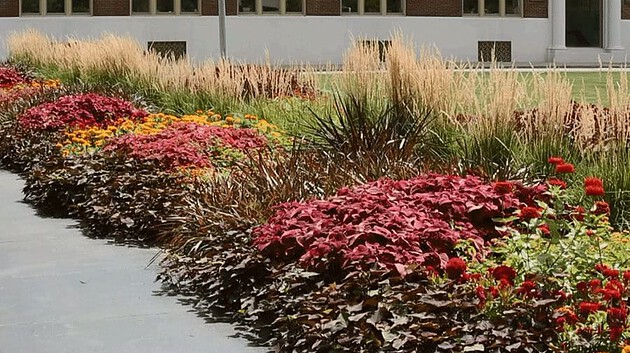New Year’s Resolutions notwithstanding, January and early February is the perfect time to get a head start on the perfect garden. The depths of winter storm and any unfolding havoc is a great time to think about what your perfect garden might be like with a little time and effort.
Whatever your idea is of the perfect garden, you can also include eco-friendly concepts at the same time. Making a place for small animals as well as the birds and bees can provide pleasure for many years. Why not make a little extra effort to keep your garden growing?

Compost To Improve Your Soil
Home composting is one of the most eco friendly ways to deal with garden wastes as well as some food waste. Home grown compost can help improve the soil. Even if local authorities provide green waste collections, many horticultural organizations encourage home composting. There are even options to produce organic compost in 90 days by recycling food and garden waste.
To get started, simply pick a shady part of the garden to position a conventional compost bin. Even though late summer to early winter is a peak time for making compost, there is no need to wait, simply get a head start now and develop good habits. Keeping the soft green materials between 25% and 50% of all the waste will keep the right balance for the bacteria and microorganisms which produce the compost.
Out With The Old
Warmer winters give you an opportunity to get started earlier. Before you can begin to get an idea of what you do want, take, the time to dig out tired shrubs and weeds. For bird and bee friendly weeds like thistles and nettles, perhaps transplant them to the best place for them to thrive – it will help cut down costs as well.
For those looking to hone their survival skills, even dandelions have their place. There are now many places to advertise unwanted garden furniture and upcycle or dispose of garden rubbish responsibly. It might even be time to put in that composting heap to keep your garden growing. Where permitted, you might also want to capture the rainwater/dirty water from your home for watering plants, lawn and any food you grow.
However, the bottom line for January and February is to root out the weeds now and establish the plants, ground cover or grass you want. There is plenty of time for plants to become established.
Getting Down To Work
Now is also the time to prune back evergreen hedges, and other winter-flowering shrubs which have finished flowering. It is also time to catch up on any pruning which was forgotten. It is also time to cut back any grass left uncut over the winter and to remove the dead grass from any evergreen grasses in your garden.
It is also time for a spring clean of cold frames, greenhouses, and cloches. Clean up canes, plant supports and organize your tools. Make sure any power tools and mowers are fully cleaned an in good working order as well.
Planning The Perfect Garden
Once the rubbish and weeds are sorted, it is time to consider your location, the condition of the soil and how much sun your garden gets. If you don’t already know the PH level of your soil, now is a great time to find out. Most plants thrive in a slightly acidic soil (pH5.5 to 7), and though you can take steps to change your soil, an easier option is to choose the plants and shrubs which suit your soil.
If you have just moved into a new area and haven’t had a chance to speak to the owners about their lawn and garden, you might want to wait a year before a major overhaul. You can if you like start small and begin as you mean to go on.
Plan the kind of places which will mean you and your family will enjoy being in the garden. With comfortable places to relax and socialize with family and friends. Make sure it is comfortable to enjoy some music or simply to sunbathe.
Get Growing
Now is the time to give yourself some options, starting with ordering seeds. Get a head start on planting vegetable seeds, planting inside if you have yet to finish clearing out a patch. If that sounds like too much this year, try planting some herbs you can enjoy in your favorite recipes. Chives and Sweet Basil are easy to grow. Coriander (cilantro) is another good candidate, but their seeds should be planted where you intend it to grow rather than being transplanted. It is also time to start off slowing slower growing flowering plants.
As for flowers, think about those like Lavender which is attractive to bees and butterflies. If you want to set aside part of your garden to help more, there are full ranges of wildflower seed packs and Kabloom seedbom for bees and butterflies which will help make it easy to be successful. If you decide to do it yourself, there are dozens of nectar rich plants of every height and color to make your garden spectacular.














